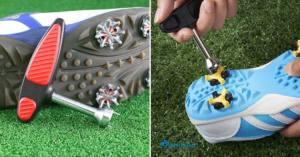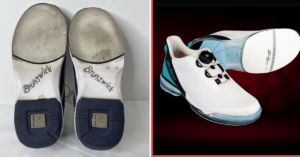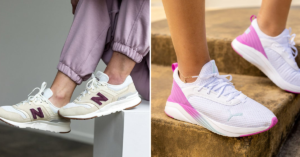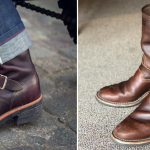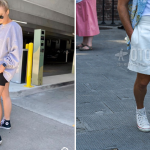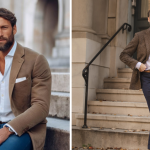As conversations around sustainability and environmental consciousness continue to grow, circular fashion has emerged as a beacon of hope in the fashion industry. The stark reality of fast fashion’s detrimental impact on the planet has propelled consumers and brands alike to shift towards more sustainable practices, with circular fashion leading the way in this movement. By prioritizing the principles of reduce, reuse, and recycle, circular fashion offers a refreshing alternative to the wasteful and harmful practices prevalent within the traditional fashion industry.
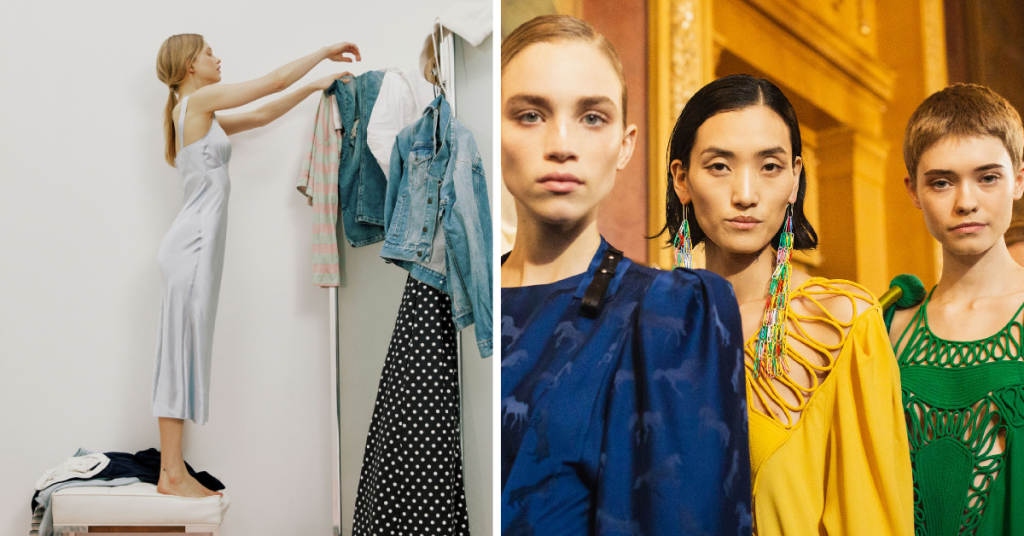
One of the key reasons behind the rising popularity of circular fashion is its ability to address the pressing issue of textile waste. With landfills overflowing with discarded clothing and accessories, the necessity for a more circular approach to fashion production and consumption has become abundantly clear. Circular fashion’s emphasis on extending the lifespan of garments through repair, resale, and recycling not only reduces the environmental footprint of the industry but also encourages a shift towards a more sustainable and responsible fashion ethos.
The Environmental Impact of Fast Fashion
Fast fashion, with its rapid production cycles and constantly changing trends, has a significant impact on our environment. The fashion industry is one of the biggest contributors to pollution, utilizing vast amounts of water, chemicals, and energy in the production process. From the cultivation of raw materials like cotton through to the dyeing and finishing stages, each step in the fast fashion supply chain leaves a footprint on the planet.
Moreover, the throwaway culture perpetuated by fast fashion results in excessive waste. Clothing items are often discarded after only a few wears, leading to overflowing landfills and contributing to the growing issue of textile waste. The synthetic fabrics commonly used in fast fashion garments take hundreds of years to decompose, further exacerbating the environmental challenges posed by the industry.
Circular Fashion’s Role in Reducing Waste
Circular fashion plays a vital role in reducing waste within the fashion industry. By embracing practices like recycling and upcycling, clothing items that would typically end up in landfills are given a new life. This not only helps in decreasing the environmental impact of excessive waste but also promotes a more sustainable approach to fashion consumption.
Furthermore, by designing products with longevity in mind and using materials that can be easily repurposed or recycled, circular fashion brands are actively working towards minimizing the amount of textile waste generated. This shift in focus from the traditional linear model to a circular one is a significant step towards creating a more environmentally conscious fashion industry.
The Benefits of Sustainable Fashion Practices
Sustainable fashion practices offer a range of perks for both the environment and individuals. By opting for sustainably made clothing, you are supporting ethical production processes that prioritize worker welfare. This means that the clothes you wear are not only stylish but also created with care and consideration for the people involved in their making. Additionally, sustainable fashion helps in reducing the harmful impact of the industry on our planet by promoting eco-friendly materials and manufacturing methods.
Moreover, embracing sustainable fashion practices can also lead to financial benefits for consumers. While sustainable clothing may initially seem pricier than fast fashion alternatives, the higher quality and durability of these items often result in a longer lifespan. This means that investing in sustainable pieces can save you money in the long run by reducing the frequency at which you need to replace your wardrobe staples. Ultimately, making the switch to sustainable fashion not only benefits the environment and those in the supply chain but can also be a savvy financial decision for conscientious consumers.
Examples of Companies Embracing Circular Fashion
In the ever-evolving world of fashion, several companies are leading the charge in embracing circular fashion practices. One standout example is Patagonia, a renowned outdoor clothing brand that prioritizes sustainability and durability in every aspect of their business. Patagonia encourages customers to repair, reuse, and recycle their garments through initiatives like the Worn Wear program, where customers can trade in their used Patagonia gear for store credit.
Another trailblazer in the realm of circular fashion is EILEEN FISHER, a women’s clothing brand that is dedicated to creating timeless and high-quality pieces with a focus on sustainability. EILEEN FISHER offers a take-back program where customers can return their worn-out garments to be either resold, recycled, or repurposed into new designs. By incorporating eco-friendly materials and ethical production practices, EILEEN FISHER showcases how circular fashion can be chic and environmentally conscious at the same time.
How Circular Fashion Promotes Ethical Production
Circular fashion promotes ethical production by emphasizing transparency in the supply chain. With a focus on traceability and accountability, companies can ensure that their garments are made under fair working conditions and without exploitation of labor. By partnering with suppliers who share their values and committing to ethical practices, brands can build trust with consumers and strengthen their reputation in the industry.
In addition, circular fashion encourages a shift towards sustainable materials and production processes. By using eco-friendly fabrics, reducing water usage, and minimizing waste, companies are able to lessen their environmental impact and promote ethical production practices. This not only benefits the planet but also provides a healthier working environment for garment workers, ensuring that the entire production cycle is ethically sound.
The Role of Consumers in Supporting Circular Fashion
When it comes to supporting circular fashion, consumers play a crucial role in driving change within the industry. By making conscious choices in their purchasing habits, individuals have the power to influence brands and push for more sustainable practices. Opting for second-hand or upcycled clothing, renting outfits for special occasions, or even participating in clothing swaps are all ways consumers can actively contribute to the circular fashion movement.
Moreover, consumers can advocate for transparency and accountability within fashion companies, urging them to prioritize ethical production and environmentally-friendly materials. By engaging with brands through social media, attending clothing repair workshops, or simply asking questions about a garment’s lifecycle, consumers can signal to the industry the importance of sustainability and encourage a shift towards more responsible practices.
Challenges in Implementing Circular Fashion
Making the shift towards circular fashion isn’t all rainbows and butterflies. One major hurdle is the lack of infrastructure to support the recycling and upcycling processes. Without the proper facilities and resources in place, it can be tough for fashion brands to efficiently implement circular practices. From sorting and cleaning used garments to breaking them down into reusable fibers, the logistics of circular fashion present a real challenge.
On top of that, consumer behavior plays a significant role in the success of circular fashion. Many people are accustomed to the fast and convenient nature of the fashion industry, making it a tough sell to get them on board with a more sustainable approach. Breaking the cycle of constant consumption and encouraging a more mindful approach to shopping is a task that requires both education and a shift in societal norms. So, it’s not just about the brands making changes, but also about us as consumers re-evaluating our shopping habits.
Innovations Driving the Circular Fashion Movement
From advanced recycling technologies to blockchain traceability, various innovations are propelling the circular fashion movement forward. One exciting development is the use of 3D body scanning technology by some companies to create custom-fit clothing. This not only reduces waste from ill-fitting garments but also caters to the growing demand for personalized fashion.
Another innovative approach is the introduction of rental platforms and clothing subscription services, offering consumers the opportunity to access a rotating wardrobe without the need for constant purchasing. Brands like Rent the Runway and Le Tote have paved the way for a more sustainable and cost-effective way to enjoy fashion trends without contributing to excessive consumption.
Tips for Incorporating Circular Fashion into Your Wardrobe
When it comes to embracing circular fashion in your wardrobe, start by giving your closet a closer look. Take inventory of what you already own – those classic pieces never go out of style! Sift through your clothes and get creative with mixing and matching different items to create fresh outfits. Remember, it’s all about versatility and maximizing the use of what you have.
Next, consider thrifting or swapping clothes with friends to give pre-loved garments a new life. Not only does this help reduce waste, but it also adds unique pieces to your collection. Embrace your inner trendsetter by exploring vintage stores or online platforms for one-of-a-kind finds that tell a story. By incorporating gently used items into your wardrobe, you can add personality and flair without contributing to the cycle of fast fashion.
FAQs about The Rising of Circular Fashion
Why is circular fashion gaining popularity?
Circular fashion is gaining popularity due to its focus on sustainability and reducing waste in the fashion industry.
How does circular fashion reduce waste?
Circular fashion reduces waste by promoting practices such as recycling, upcycling, and reusing materials in the production process.
What are the benefits of sustainable fashion practices?
Sustainable fashion practices help reduce the environmental impact of the fashion industry, promote ethical production, and support a more circular economy.
Can you give examples of companies embracing circular fashion?
Companies like Patagonia, Eileen Fisher, and Reformation are known for their commitment to circular fashion practices.
What role do consumers play in supporting circular fashion?
Consumers play a crucial role in supporting circular fashion by choosing to purchase from brands that prioritize sustainability and by recycling or donating their clothing.
What are some challenges in implementing circular fashion?
Some challenges in implementing circular fashion include high production costs, limited availability of sustainable materials, and lack of awareness among consumers.
What innovations are driving the circular fashion movement?
Innovations such as fabric recycling technologies, sustainable dyeing processes, and rental and resale platforms are driving the circular fashion movement forward.
How can I incorporate circular fashion into my wardrobe?
You can incorporate circular fashion into your wardrobe by buying second-hand clothing, supporting sustainable brands, upcycling old clothes, and practicing mindful consumption.
